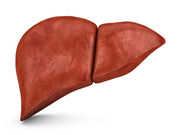20-year survival almost 80 percent; over one-third of patients have CKD, altered liver biochemistries
TUESDAY, Dec. 26, 2017 (HealthDay News) — Liver transplantation in childhood is associated with good long-term survival, according to a study published online Dec. 15 in the American Journal of Transplantation.
Josefina Martinelli, M.D., from the Université Paris-Sud, and colleagues examined the outcomes of 128 children who underwent deceased donor liver transplantation from 1988 to 1993 (median age, 2.5 years). Participants were followed for a median of 24 years.
The researchers found that the 20-year patient survival rate was 79 percent and that the 20-year graft survival rate was 64 percent. Forty-two percent of survivors had elevated serum aminotransferase and/or gamma-glutamyl transferase activities after a single transplantation. In graft histology of 35 patients, 11 showed signs of chronic rejection and and five of biliary obstruction. Patients with abnormal and normal serum liver tests had mean total fibrosis scores of 4.5 and 3 out of 9, respectively. In 35 survivors, including four in end-stage renal disease who were undergoing dialysis or had undergone renal transplantation, the glomerular filtration rate was less than 90 mL/min. The median final heights were 159 and 172 cm for women and men, respectively; in 37 patients, final height was below the target height.
“Twenty-year survival after childhood liver transplantation may be close to 80 percent, and final height is within the normal range for most patients,” the authors write. “However, chronic kidney disease or altered liver biochemistries are present in over one-third of patients, which is a matter of concern for the future.”
Copyright © 2017 HealthDay. All rights reserved.








